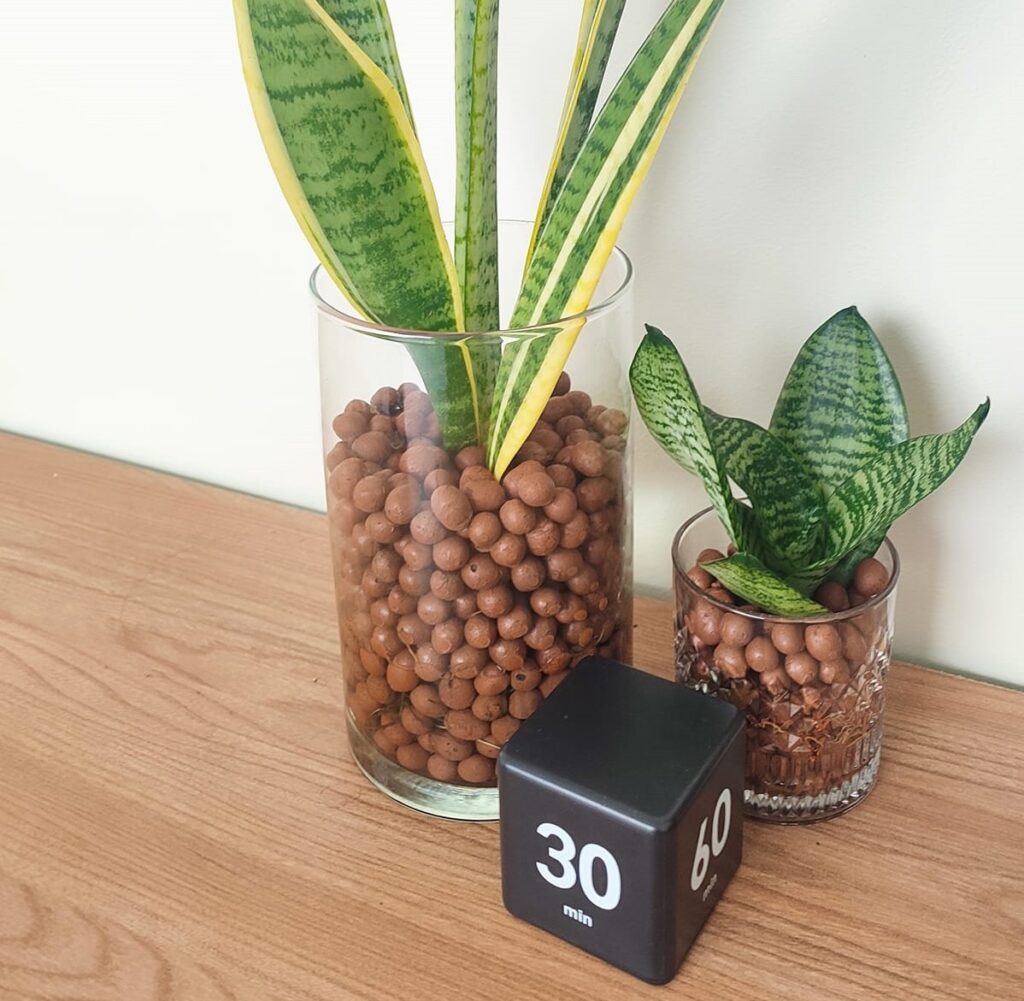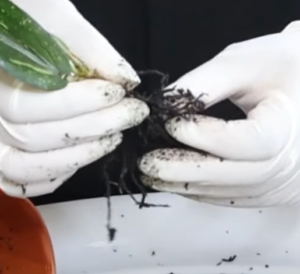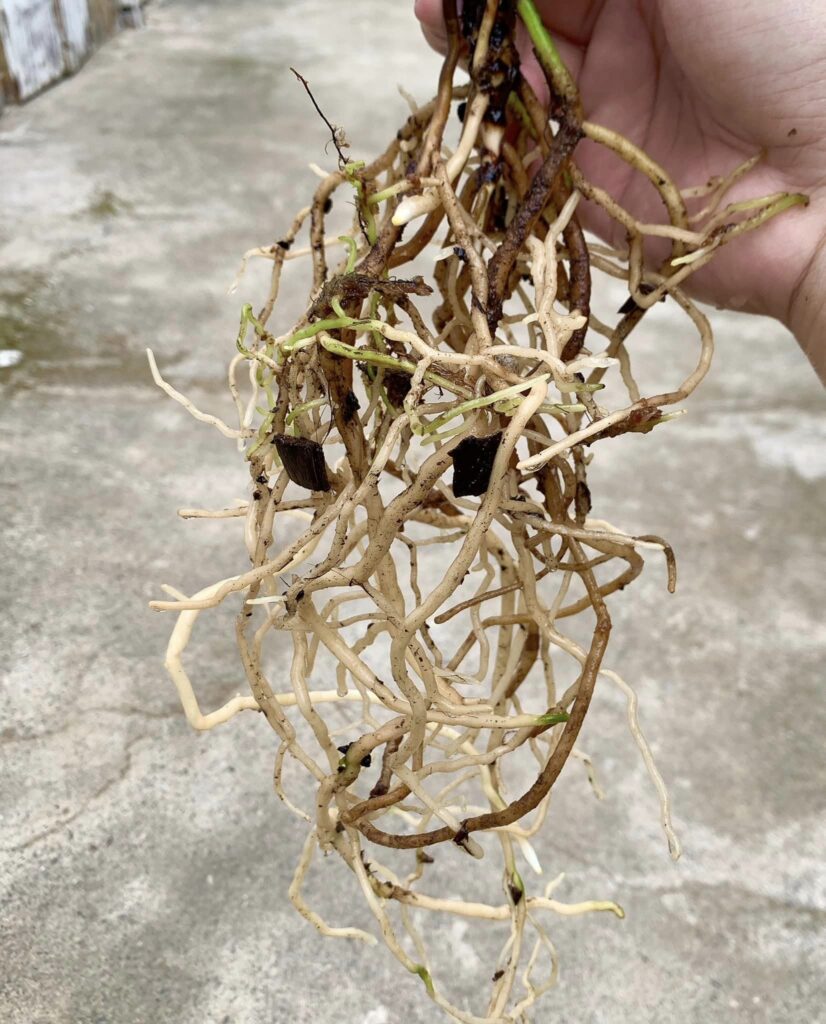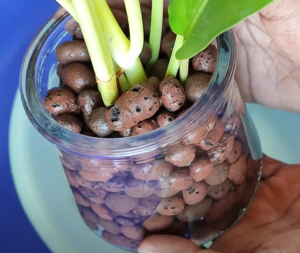Switching your plants from soil to a semi-hydroponic system using LECA isn’t as daunting as it seems. While it can be a bit time-consuming, especially for plants with intricate root systems, this guide will walk you through the process, step-by-step, with some handy troubleshooting tips.

Step 1: Get Your LECA and Pot Ready
Before you start, make sure your LECA is clean and has been soaking for a few days. You’ll also need a pot for your plant.
You can find some great options on our Useful Products page, or you can repurpose the nursery pot your plant came in, paired with a deep saucer.
Must read:
Step 2: Remove and Clean the Plant’s Roots
The most time-consuming part is getting your plant out of its current organic medium, like soil or bark, and making sure the roots are free from any organic matter.

Photo credits @TheLecaQueen
Plants like Althurium, with their thick roots, make this step a breeze.
On the other hand, plants like Alocasia, with fine, thin roots, can be a bit tricky to clean.
Leaving soil on the roots when transferring to LECA can lead to a continuously wet environment, which most plants don’t appreciate. Over time, this can cause root rot and negatively impact your plant’s health. So, it’s crucial to remove as much organic material as possible to allow the roots to make direct contact with the LECA.
If a root is too difficult to clean without damaging it, it’s better to trim it off.
If you find it challenging to remove all the soil, you can soak the plant in water to help loosen it. Be aware that this might cause some roots to rot, but you can monitor the situation and wait for new water roots to grow.

Last Resort Options
If you’re still struggling to get the soil off, you have three choices.
- Remove all roots and treat the plant like a cutting.
- Go ahead and plant it in LECA, but make sure to flush the system frequently and use products like Physan 20 to prevent root rot.
- Revert to soil and call it quits.
For those dealing with moss-rooted plants, soaking can help significantly. However, I usually opt to reroot these plants or avoid purchasing them altogether.
Step 3: Planting in LECA
Planting in LECA is pretty straightforward and similar to using traditional soil.
Make sure your LECA is moist before you start.

If you’re potting multiple plants in one container, here’s a tip: fill the pot about three-quarters full with LECA and then submerge it in water. Place your plants in the LECA, then lift the entire pot out of the water.
Arrange the roots so they’re not in contact with each other. This helps prevent root rot from spreading if one root starts to decline. Trimming long roots can help with this, even though it might feel counterintuitive.
LECA works through capillary action, soaking up water and storing it within its clay structure. As plant roots touch the LECA, they draw water, allowing the LECA to absorb more from below.
Step 4: Watering Techniques
After transplanting, there are two main watering methods in semi-hydroponics: the Reservoir Method and the Shower Method.
Reservoir Method
In this approach, you fill the reservoir immediately with a liquid of your choice. Some people use plain water, while others add supplements like seaweed extract or Superthrive.
I personally use filtered water mixed with 6mL of Seaweed and 2.5mL of Superthrive per gallon. Keep a close eye on your plant during the first week to spot any signs of stress, and make sure to flush it weekly until it’s well-established.
Shower Method
With this method, you leave the reservoir empty after potting and shower the plant every day or two. This is ideal for plants that prefer a drier environment and helps ease the transition from soil to LECA.
Pros
- Helps the plant grow new “water roots” adapted to the LECA environment.
- Ensures regular flushing of any remaining organic material.
Cons
- It’s labor-intensive and requires frequent attention.
- May stress the plant due to the movement caused by watering.
- Not suitable for plants like orchids that need hydrated yet airy roots.
Choose the method that best suits your plant’s needs and your lifestyle. Happy planting!
Feel free to send the next part of the article for further rewriting!
Step 5: Monitoring and Upkeep
As your plant adjusts to its new semi-hydroponic home, it’ll give you clues about how it’s doing. Keep a close watch to help it through this change.
Too Much Water?
If your plant looks like it’s getting too much water, switch to the Shower Method and introduce Physan 20 by spraying it at the root base. This product fights off algae, fungi, bacteria, and viruses.
Another option is to shower the plant with water mixed with hydrogen peroxide, which helps prevent root rot without messing up the roots.
If the plant still struggles, take it out of the LECA, trim away any rotten roots, treat with hydrogen peroxide, and try again. But remember, don’t keep pulling the plant out to check its roots; it doesn’t like that and it adds stress.
Not Enough Water?
If the plant seems thirsty, you can either switch to the Reservoir Method or shower it more often.
This is rare, as LECA is pretty good at retaining moisture.
If you’re still having issues, it might be a sign that something’s off with your potting setup or that the roots didn’t survive the transition.
Conclusion
Switching your plants to a semi-hydroponic system using LECA is a rewarding journey that’s easier than you might think.
Whether you’re a seasoned gardener or a newbie, this guide provides you with a step-by-step roadmap to make the transition smooth and successful. So go ahead, give your plants the semi-hydroponic life they deserve!


